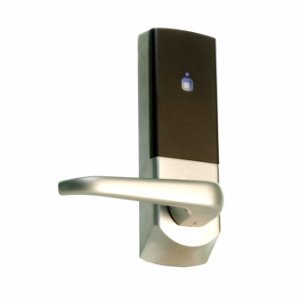What Are The Features Of A Modern Access Control System?
Every business needs to make security a high priority, fundamentally because an employer has a duty to protect its employees and provide a safe and comfortable working environment. But of course a business also needs to safeguard its assets, in terms of buildings, materials, product and equipment, and the most common way of doing that is the implementation of an access control system.
What is an access control system?
An access control system is a means of verifying the access credentials of a person, and then allowing them access to a building. This is a two-step process usually carried out using an automated system, which can vary in terms of sophistication and functionality. In general an access control system can be tailored to suit the practicalities of the business, and while there are many different types of access control system, they come in three distinct parts:
- An IT system – The central technological control element of the system
- Access process – The credential-checking option used by employees to gain access
- Operational procedures – The documented process which details how authorisation is decided and processed, how the system is used and who has specific responsibilities.
Modern access control systems offer different levels of technology and additional functionality which will suit businesses of varying size, nature and operations. But we can summarise most systems by looking at the features we expect in a modern access control system.
Common features of modern access control systems
The critical advantage of a modern access control system is not having to fumble around looking for your key, possibly in bad weather or when running late, and avoiding the physical interaction of the key with the lock. Modern access control systems allow for fast and intuitive access for people presenting the correct credentials, ie. with a card, pass, key fob etc. This means a high volume of people can be checked and verified quickly, which helps businesses at high priority times, such as shift changeovers, in bad weather or for events.
Having an automated system means you don’t need to employ someone to check credentials and authorise access, so people can gain access on a 24/7 basis which opens the business up to the possibility of working extended hours or being a more flexible employer.
The type of system used for verifying credentials can be changed to suit the practical needs of the business. So this can be a code/PIN, a card, a key fob, a bar code, a smartphone app, a Bluetooth signal or a biometric feature.
Robust software systems prevent access means being copied or bypassed, and software updates guard against hacking also. The access control system administrator can also amend the credentials required if a security breach has been identified or is suspected. So they can change the code or PIN required or issue new cards/fobs etc and can restrict access to individuals as required also.
Depending on the sophistication of the system software there are various features that can be incorporated into an access control system to provide visibility and real-time information regarding who is on site and when. These can provide analytics and reports to benefit productivity as well as for human resources, discipline, insurance and health & safety.
Most smart access control can be integrated with other systems such as intruder alarms, heating and lighting, CCTV and ANPR to provide added functionality, better security and cost savings.
A system administrator or other management can be set-up to receive notifications if someone logs in ‘out of hours’ or attempts to at a time where they are not authorised to be on site.
The system can be programmed to enable visitors to access the site and bypass normal credential checks. This can include contractors such as cleaning staff who are only authorised to be on site at certain times.
The system administrator, along with other management functions, will be able to monitor the system remotely to check who is on site when and that the system is operating correctly.
Most access control systems are located at the main access point to the building, and where internal authorisation is needed on large sites or where multiple sites are managed by one system, other log-in portals will be located in different positions. However, the system will be managed from one central location which the system administrator will be responsible for, and from where they can monitor the system and allocate and restrict access as necessary.
Contact MB Direct for more information on access control systems
If you are looking at a new access control system for your business, then you can speak to our experts at MB Direct. We can advise on the different technologies and functionality available and what the practical implications of these are, with a view to identifying and implementing the best access control system for your business.